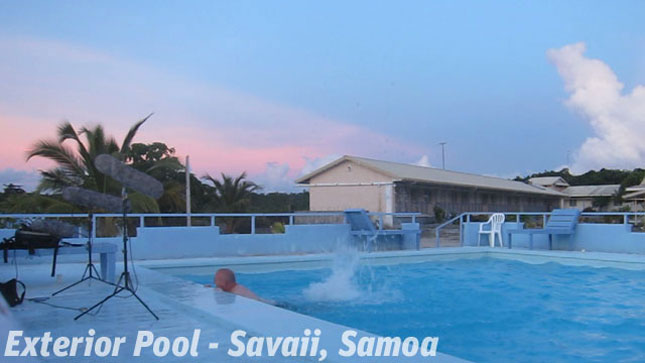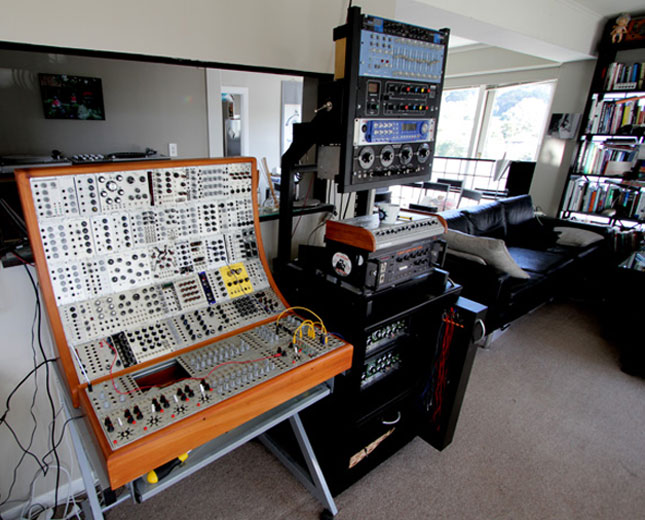[vimeo]http://vimeo.com/30574333[/vimeo]
Water Foley is a new sound library of water movement, footsteps and sound effects released by HISS and a ROAR and recorded by Tim Prebble.
This library was recorded in two exterior swimming pools, one interior pool, a sandy beach at low tide, a river, a stream, a rock pool at low tide and a swamp. Apart from human movement, footsteps and splashing I also used kelp and seaweed to emulate the more complex sound of tentacles, which along with some of the mud suction sounds are very useful components for creature design. In all cases I have minimised background ambiences as much as humanly possible; through microphone choice and placement along with time of day & tide movement. The two exterior pools were recorded multichannel, using two MKH70s and a stereo Sanken CSS5.
[soundcloud url=”http://soundcloud.com/timprebble/water-foley-preview”]
Water Foley is available now at $49. The package includes 1,663 sounds in WAV (96kHz/24-Bit).
Now here’s our usual q&a with Tim, talking about the release:
DS: What inspired the library?
TP: It is motivated by my past experiences of having to edit water effects or footsteps with not quite enough source material… so now I have too much! When you think of someone walking along a beach, and then into the waves a foley performer can only do so much. Even when foley studios have a pool of some form it can often be problematic for violent or aggressive movement, and even knee deep water has such distinct pitch to it that really the only way to solve it is with the real thing. But when you need it the season or weather may make it difficult to record, so I’m trying to solve my own problems!

DS: So you waited for summer and went to the beach?
TP: The recordings in this library were actually done over the last eight months. Some locations I really had to avoid in summer eg the swamp in Waiohine Gorge would be deafening with cicadas in summer. But I also wasn’t keen to freeze so I recorded there back in Autumn… I knew I wanted to do recording in swimming pools but an interior pool really limits your use of to only interior sounds, as they are such reverbant places and water really triggers reverb. After asking around I found some friends of my sister who live in the country and have a pool. So I hired my nephew and my brother in law to perform for me and got great material. Then when I was in Samoa the first time back in February I totally lucked in & stayed at a resort on Savaii where I was the only guest (it was the off-season) and they had a great exterior pool, so I recorded a lot of material there too.
One of the beach footstep recording sessions I did at Scorching Bay, which is a sheltered sandy beach and is usually busy in summer, but I waited for a cold day when a storm had just passed and I had the beach to myself. It was just a matter of knowing when the tide was out to minimise the waves & ocean ambiences. The same applied with the rock pool recordings which I did around the South Coast of Wellington. You need a 4WD to get there but initially I went for a different reason, to record some kelp sounds.
Back in 2009 I was working on a film called UNDER THE MOUNTAIN by Jonathan King and the film contained some nasty slimey shape-shifting creatures called the Wilburforces. They had tentacles and after a lot of experimenting I managed to create some great sounds for their movements using seaweed. In New Zealand some parts of the coastline have kelp growing in the sea, in the form of long strands of seaweed. So I took a machete and cut some long slimey bits off and then performed movements & hits etc in a sheltered rock pool. While I was there I did some more footsteps and wading recording, but it was only the way back I realised I’d driven through a couple of fords. So I set up my mics, waited for a 4WD to go through so I could set levels, and then recorded lots of passes at various speeds, getting a run up so I could turn off the motor. Fun!

DS: What mics did you use?
TP: With the footsteps I recorded in mono as I needed to be fairly close, so I used my Sanken CSS5 in mono mode. I also did some with my MKH70 and its interesting to compare the two – the MKH70 is such a great mic, but in mono mode the Sanken performed really well. With the pool recordings I used two MKH70s as well as the Sanken CSS5, the latter giving a tightly focused stereo image whereas the MKH70s are wider & more discrete, which can be useful. When I was splashing water across the pool, the movement in the MKH70s is way more pronounced than the Sanken, but it really depends on the context of use as to which is more valuable later on.
DS: What are some of your favourite sounds form the library?
TP: It is easy to get seduced by some of the stranger sounds, like the kelp movement or the mud suction sounds from the swamp. But it is so great to finally have lots of clean, dynamic water effects – it really makes cutting a scene involving water a joy rather than a headache.
DS: Whats next for you and for HISSandaROAR?
TP: My next film, Andrew Adamson’s Mr Pip, doesn’t start until January so I am finally getting a chance to catch up on all my own projects. While it’s been great to have had such a busy year, its also been frustrating to have to put lots of other projects on pause. Finishing the rebuild of my modular synth with cases from Matthew Goikes is another of those long term projects I’ve been waiting to do – it likes a whole new universe of sound!

Next for HISSandaROAR is a big high rez library of CONTACT MIC recordings. People keep asking me for a copy of my contact mic Christmas present from last year, so I’ve spent a lot of time recording a whole new library and it really is such a diverse collection of dynamic material thats just prime for manipulation and design work. After that is the SPRINGS library and then hopefully, at long last, THE DOORS! It’s a somewhat boring, time consuming process to actually finish The Doors library for release, so other things keep taking priority. But I swear it will be released this year, although I am not starting any new crowdsource libraries until I can develop a better process…
My next big field recording trip is to Bouganville, Papua New Guinea at the end of January. It will be a more difficult trip than Samoa but every bit as fascinating! I spoke to some of the crew and apparently the village they filmed in had very few birds – omnipresent dogs & chickens, but the insects are phenomenal!!
Thanks for making this one Tim! This is a great series that fills a gaping hole in pretty much every library I’ve seen! Brilliant idea.
thanks Dave!
Damn..could have done with this only a month ago :) Anyways, great sounds!